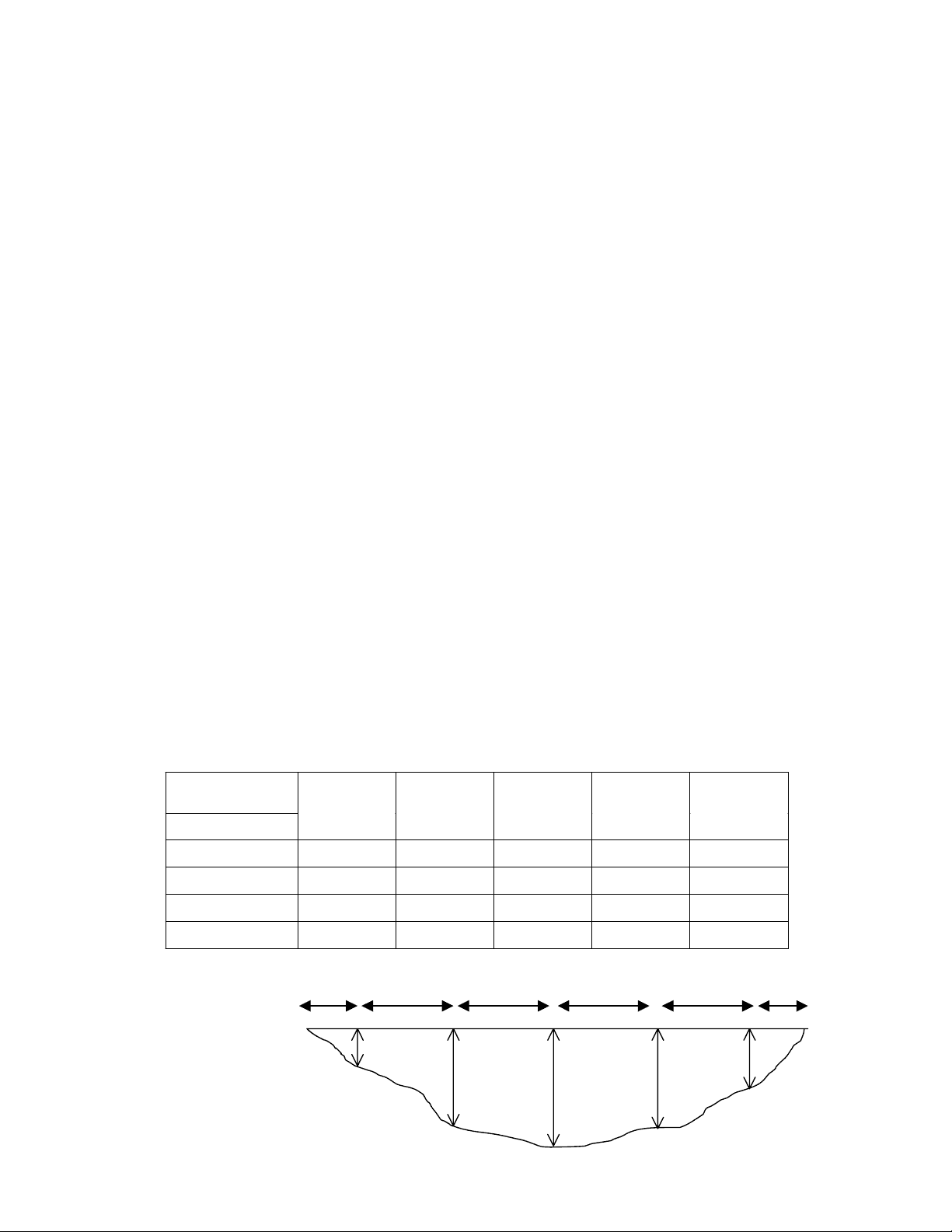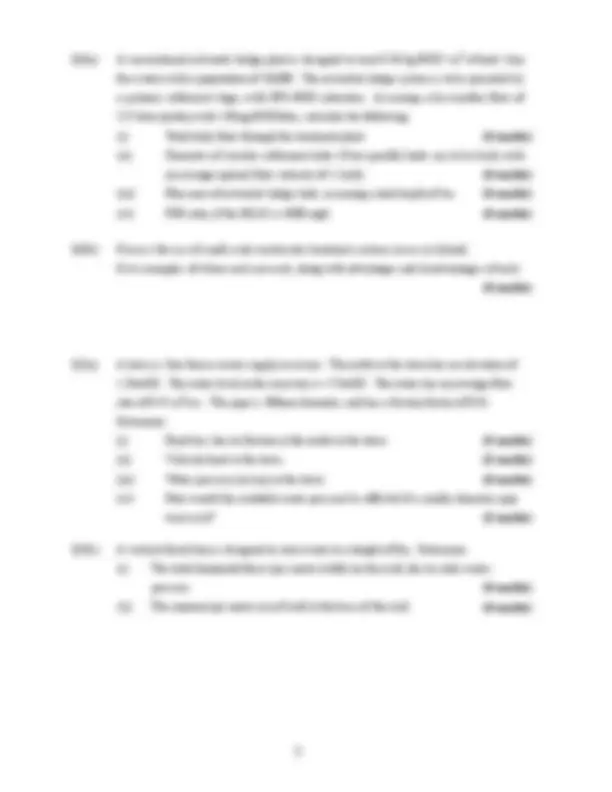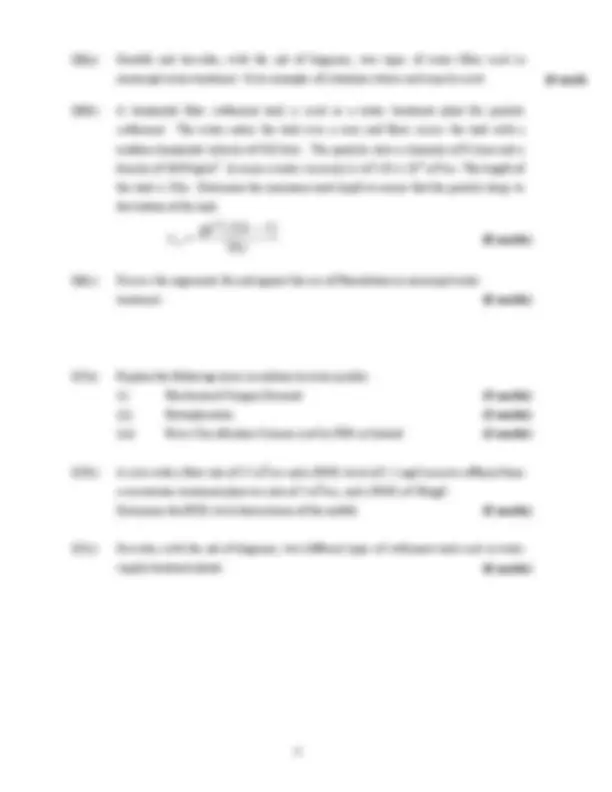




Study with the several resources on Docsity

Earn points by helping other students or get them with a premium plan


Prepare for your exams
Study with the several resources on Docsity

Earn points to download
Earn points by helping other students or get them with a premium plan
Community
Ask the community for help and clear up your study doubts
Discover the best universities in your country according to Docsity users
Free resources
Download our free guides on studying techniques, anxiety management strategies, and thesis advice from Docsity tutors
Main points of this past exam are: Discharge in River, Tipping-Bucket Rain-Gauge, Hydrology of Area, Velocity Area Method, Velocity Measurements, Municipal Waste Incinerators, Stack Emissions, Landfill Site, Moving Observer Method
Typology: Exams
1 / 4

This page cannot be seen from the preview
Don't miss anything!



Instructions Answer 5 questions All questions carry equal marks.
Examiners: Mr. L O’Driscoll Mr. J. Murphy Mr. P. Anthony
Q1(a) Describe the mechanism of a tipping-bucket rain-gauge. (4 marks)
Q1(b) A large-scale shopping centre and car park is proposed for an area that was previously open parkland. How will this affect the hydrology of the area? Include in your answer a description of the direct affect on local stream and storm sewer flows. (4 marks)
Q1(c) An autographic flow monitoring station is to be set up at a specific location on a river. As a result, a rating curve will be required at this point. Velocity measurements were taken at different points throughout the river section, as shown below. Calculate the total discharge in the river on this day, using the velocity area method. (12 marks)
Distance from left bank Depth
1.0m 3.0m 5.0m 7.0m 9.0m
0.5m 3.7 4.4 4.5 4.2 4. 1.0m 3.0 4.0 4.0 3.7 3. 1.5m 2.7 3.9 3.6 3.3 3. 2.0m 0 2.7 3.0 2.5 /
Figure 1 – Cross- section of river
1m 2m 2m 2m 2m 1m
1.6m 2.2m (^) 2.4m 2.2m^
1.8m
Q2(a) Discuss the possible environmental impacts associated with landfills, and how these impacts can be prevented or minimised during the design and construction of the site, as well as throughout the life-span of the site. (5 marks)
Q2(b) Explain how stack emissions are cleaned in Municipal Waste Incinerators. (5 marks)
Q2(c) What are the advantages and disadvantages of a central waste sorting facility in comparison with source separation of municipal waste, as part of an overall recycling programme? (5 marks)
Q2(d) Discuss the criteria used when selecting locations for a landfill site. (5 marks)
Q3(a) Explain the methodology involved when conducting a parking survey for an existing shopping centre car park. Give typical examples of forms used. (6 marks)
Q3(b) Discuss how public and private transport systems can be integrated to manage traffic within urban areas. In particular, show how CASP sets out a strategy for the Cork area. (4 marks)
Q3(c) Given the data below, use the Moving Observer Method to calculate traffic flow and average speed in each direction over a 5km stretch of road. Three test runs were made in each direction. Observer Travelling Northbound Journey Time (mins)
X count Vehicles overtaking test car
Vehicles overtaken by test car 7 82 7 3 8 90 8 5 8 87 6 4 Observer Travelling Southbound Journey Time (mins)
X count Vehicles overtaking test car
Vehicles overtaken by test car 7 86 6 9 7 89 8 3 9 92 7 10 Traffic flow and journey time may be calculated by:
ta t w q x y
q t tw y (10 marks)
Q6(a) Identify and describe, with the aid of diagrams, two types of water filter used in municipal water treatment. Give examples of situations where each may be used. (^) (6 marks
Q6(b) A horizontal flow settlement tank is used in a water treatment plant for particle settlement. The water enters the tank over a weir and flows across the tank with a uniform horizontal velocity of 0.015m/s. The particles have a diameter of 0.1mm and a density of 2650 kg/m^3. Assume a water viscosity ( v) of 1.01 x 10-6^ m^2 /sec. The length of the tank is 10m. Determine the maximum tank depth to ensure that the particle drops to the bottom of the tank.
s
(8 marks)
Q6(c) Discuss the arguments for and against the use of fluoridation in municipal water treatment. (6 marks)
Q7(a) Explain the following terms in relation to water quality: (i) Biochemical Oxygen Demand (3 marks) (ii) Eutrophication (3 marks) (iii) River Classification Scheme used by EPA in Ireland. (3 marks)
Q7(b) A river with a flow rate of 15 m^3 /sec and a BOD 5 level of 1.1 mg/l receives effluent from a wastewater treatment plant at a rate of 2 m^3 /sec, and a BOD 5 of 20mg/l. Determine the BOD 5 level downstream of the outfall. (5 marks)
Q7(c) Describe, with the aid of diagrams, two different types of settlement tank used in water supply treatment plants. (6 marks)